1. Introduction to Kichijoji: A Brief Overview
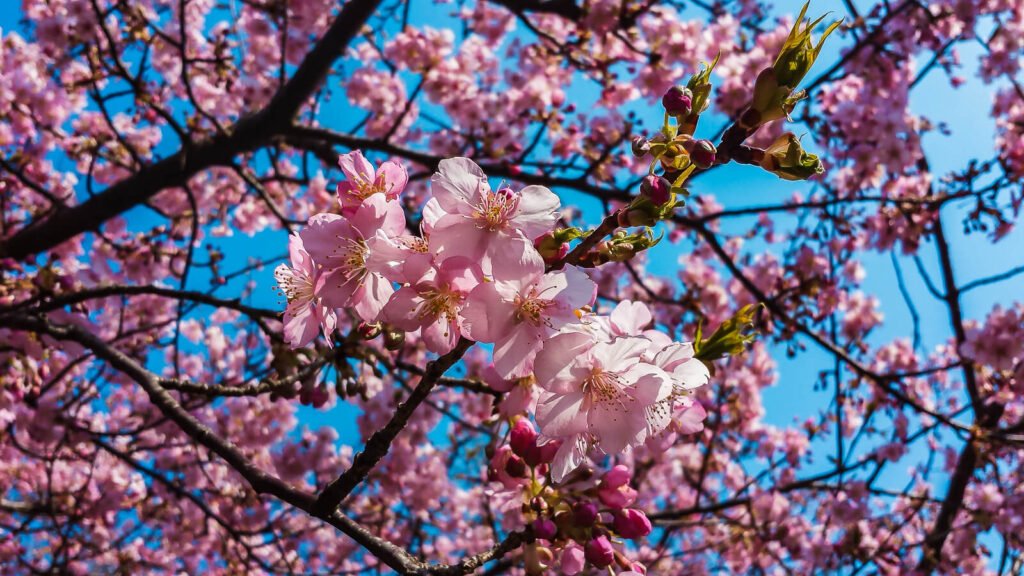
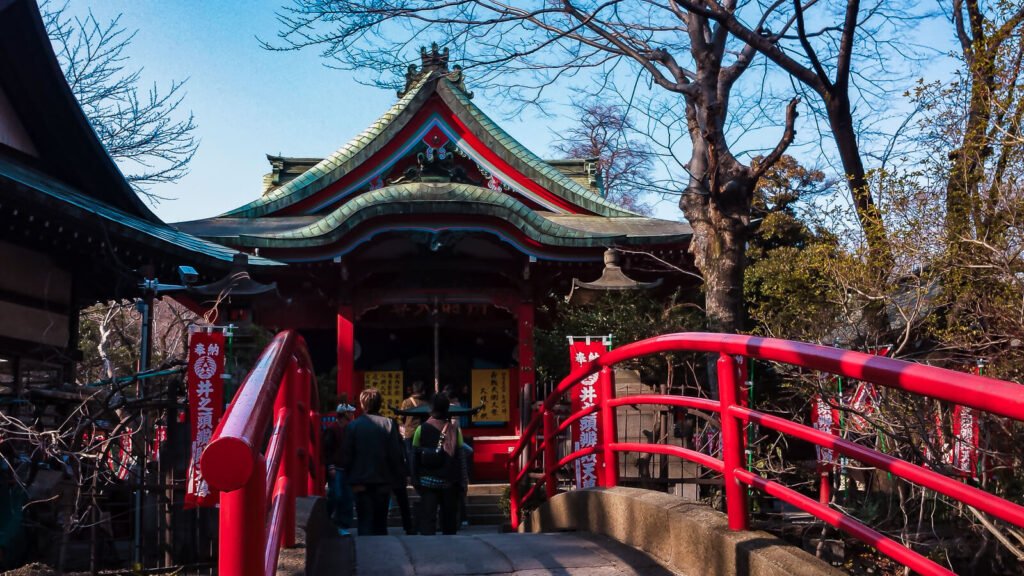
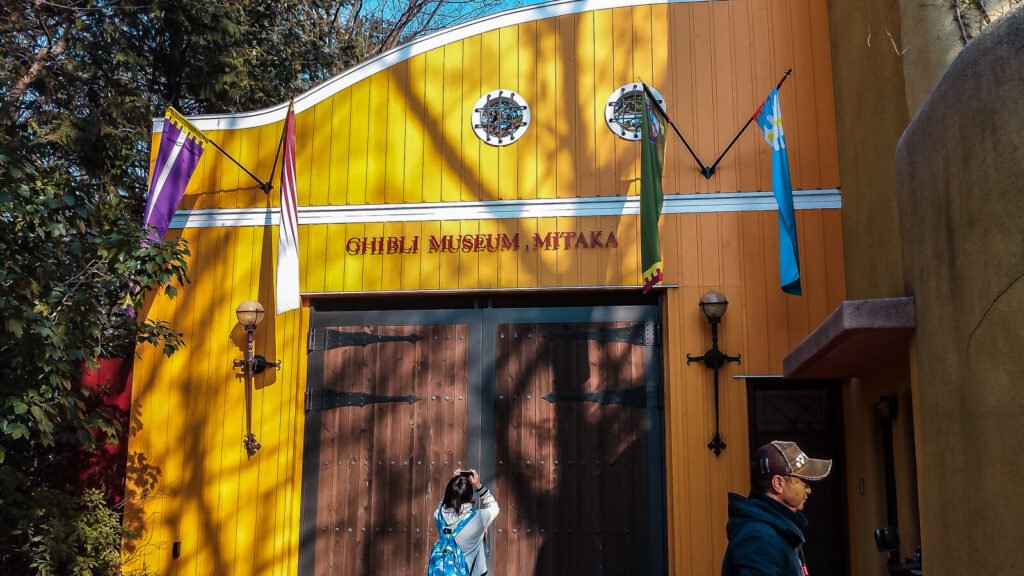

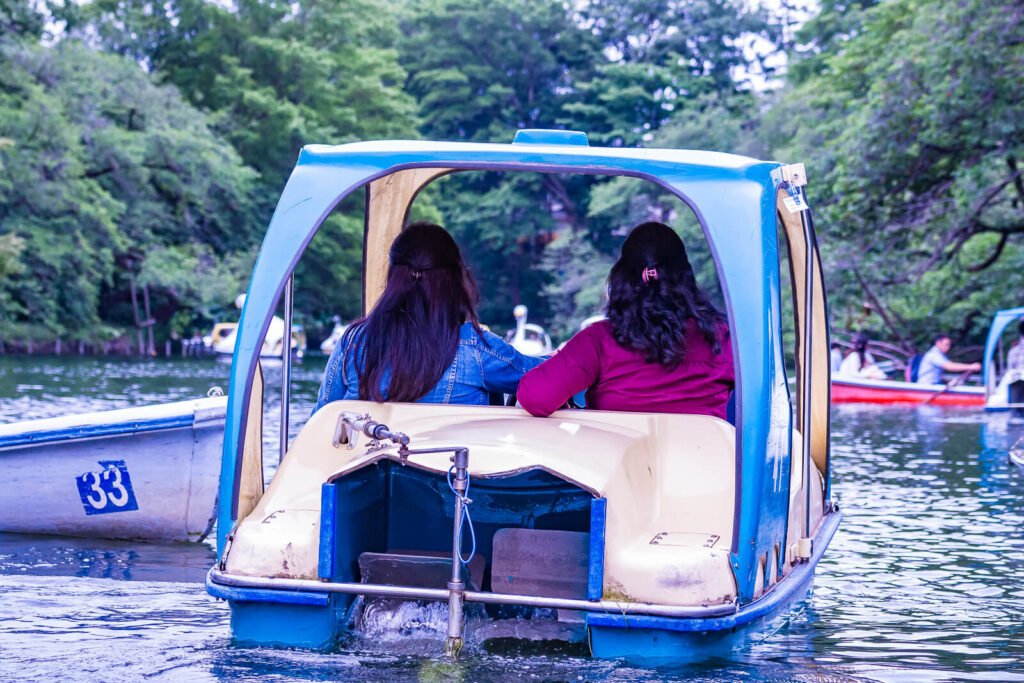

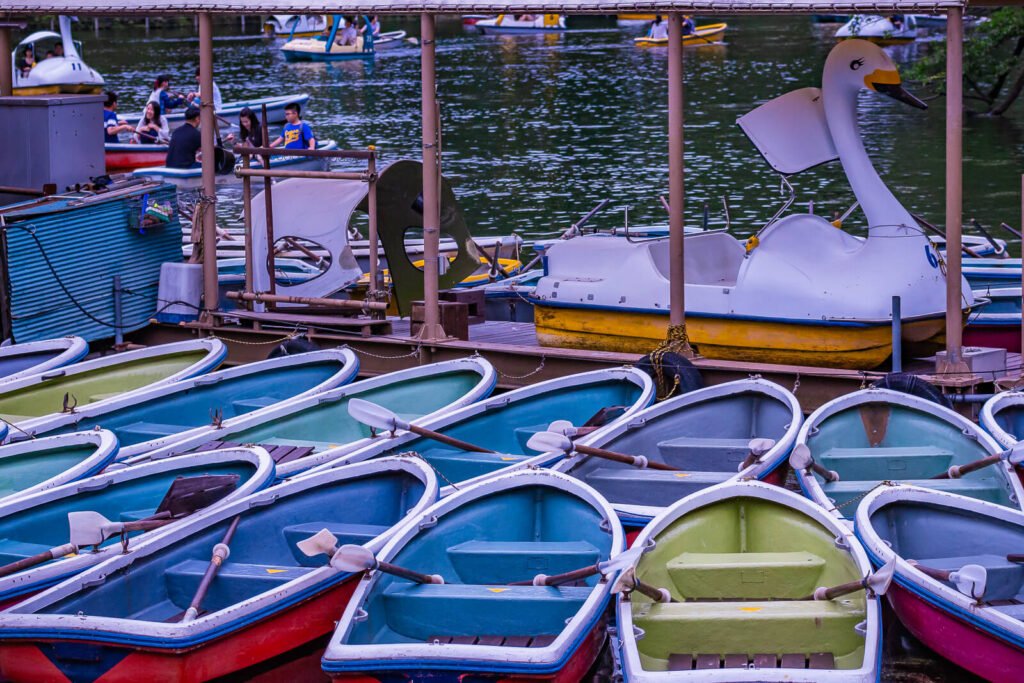


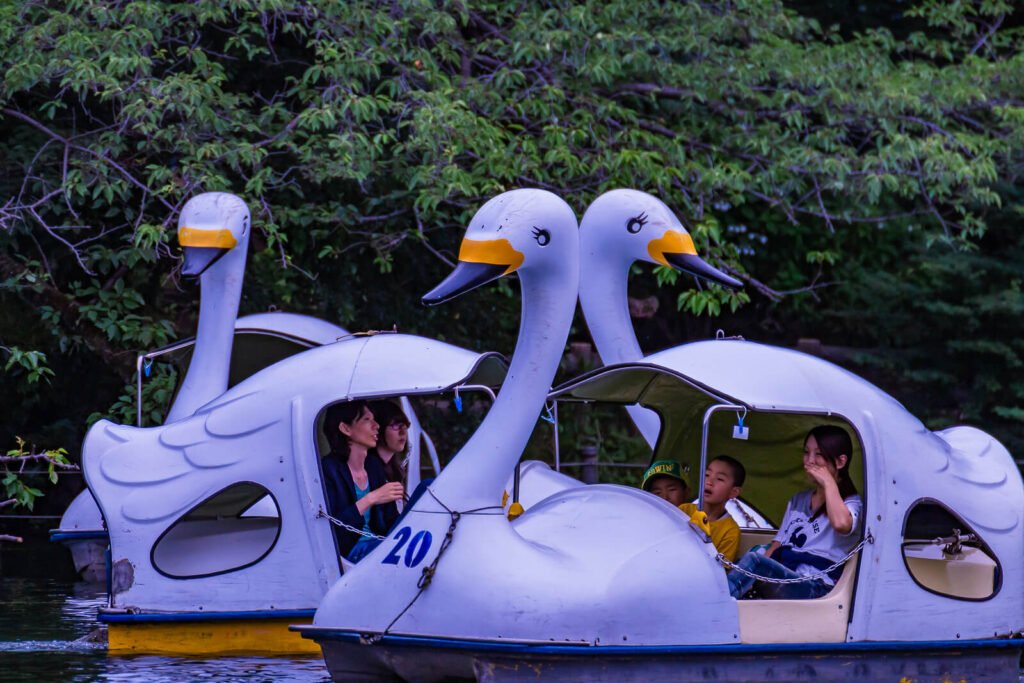
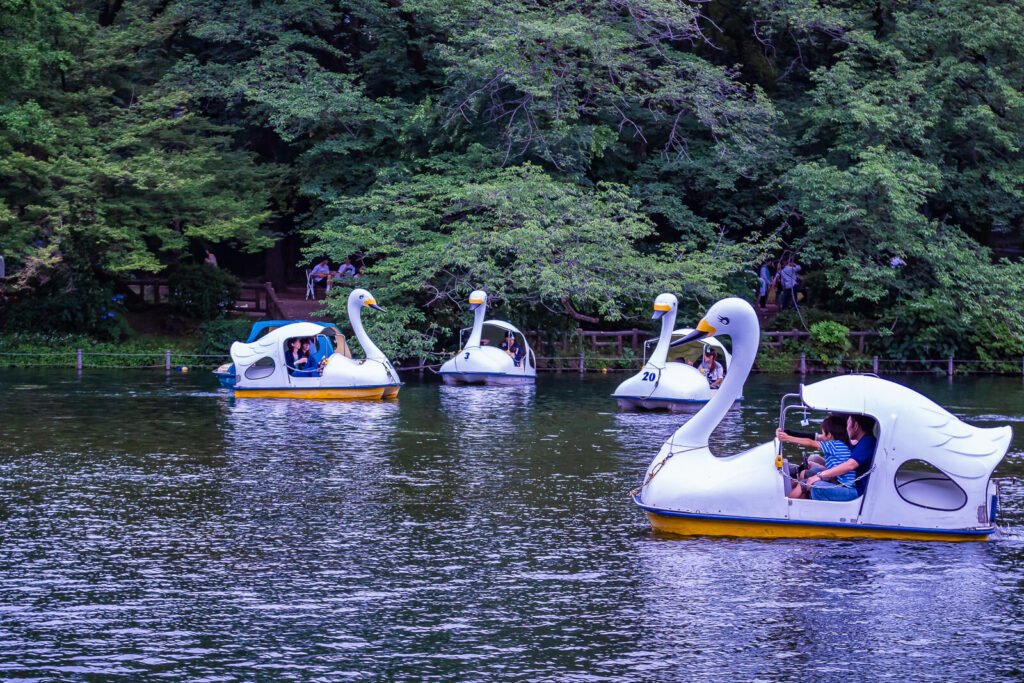
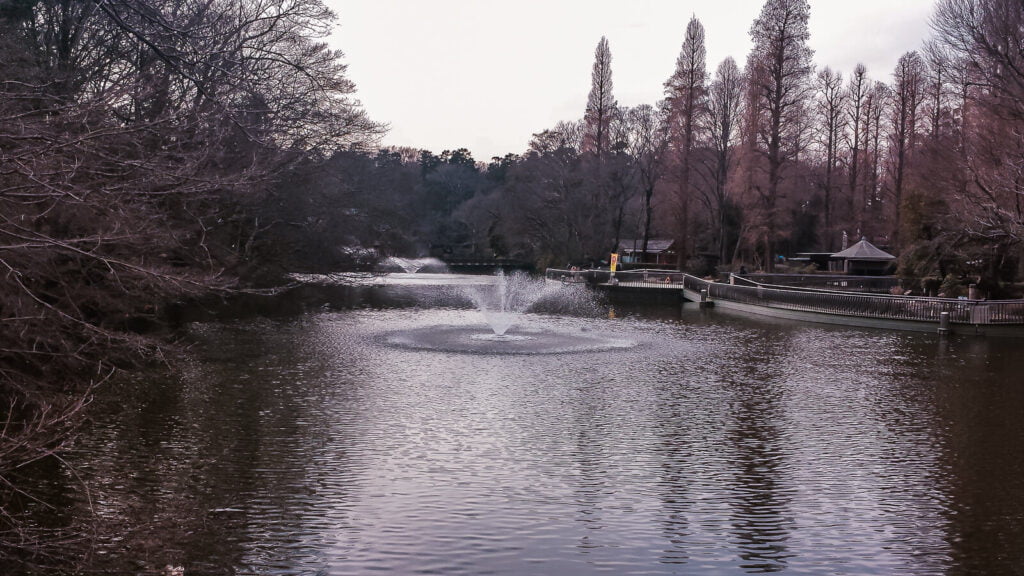
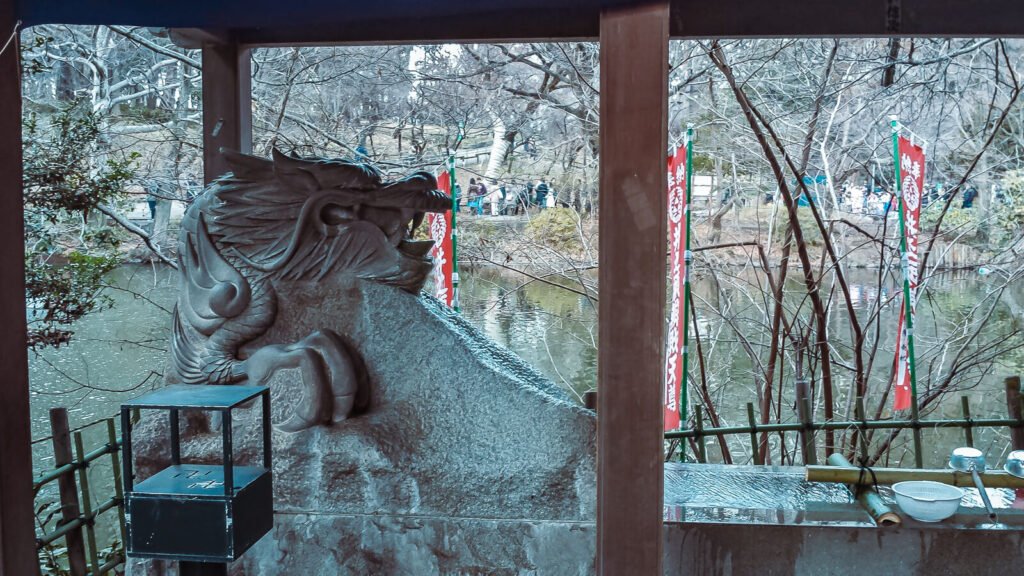

1.1. Location and Geography
Nestled within the Musashino region in western Tokyo, Kichijoji enjoys a prime location that offers a harmonious blend of urban convenience and natural serenity. It lies just west of Shinjuku, one of Tokyo’s major commercial and administrative hubs. Despite its proximity to the bustling city center, Kichijoji manages to maintain a more relaxed and residential atmosphere.
The geographical layout of Kichijoji features gently rolling hills, which are a rarity in Tokyo’s otherwise flat landscape. This topographical variation adds to the neighborhood’s unique charm. Notably, the district’s elevation provides some breathtaking views, especially during the cherry blossom season when the town is awash with pink hues.
1.2. Historical Significance
To understand the essence of Kichijoji, one must delve into its rich history. The roots of Kichijoji can be traced back to the early Edo period (1603-1868), when it was primarily a small farming village. Its transformation into the vibrant urban district we see today is a testament to Tokyo’s relentless evolution.
Historically, Kichijoji served as a stopping point for travelers and pilgrims en route to the nearby Musashino region, which was famous for its natural beauty. The name “Kichijoji” itself has a spiritual connotation, with “Kichi” meaning “auspicious” and “Joji” referring to a temple. This name hints at the district’s close association with religious sites and spiritual practices.
2. The Allure of Kichijoji: What Makes It Special?
2.1. Cultural Diversity
One of the most striking aspects of Kichijoji is its vibrant cultural diversity. The district’s streets are lined with shops, restaurants, and cultural centers, representing a kaleidoscope of traditions from around the world. As you stroll through Nakamichi Street or Harmonica Yokocho, you’ll encounter a medley of languages, cuisines, and artistic expressions. Kichijoji’s residents and businesses embrace this diversity, creating a welcoming atmosphere that’s open to all.
2.2. Green Spaces and Nature

Inokashira Park stands as a lush testament to Kichijoji’s commitment to preserving green spaces within the urban jungle. This sprawling park is centered around a picturesque pond and is a haven for both locals and visitors. Cherry blossoms bloom in spring, transforming the park into a fairy-tale wonderland. During autumn, the trees don their fiery hues, offering a tranquil escape from the bustling city. For a serene afternoon, rent a rowboat and paddle on the pond, or simply relax on the shores and savor the beauty of nature.
This article includes affiliate links that do not incur additional charges for you. I may receive a modest commission if you click on them and make a purchase.
2.3. Culinary Delights
Kichijoji is a culinary haven that caters to every palate. From savory street food stalls to fine-dining restaurants, the district offers a gastronomic journey that’s hard to resist. Ramen enthusiasts will find solace in the variety of ramen joints that dot the streets, each boasting its unique flavors and styles. Be sure to sample the local specialty, “Kichijoji Ramen,” characterized by its rich, soy-based broth and perfectly cooked noodles.
2.4. Arts and Entertainment
For lovers of the arts, Kichijoji is a treasure trove waiting to be explored. The Ghibli Museum, dedicated to the works of the renowned Studio Ghibli, is a must-visit attraction. Here, you can immerse yourself in the magical world of Hayao Miyazaki and explore the creative process behind these beloved animated films. The museum’s whimsical architecture alone is worth the visit, resembling a storybook castle.
You may also like to read : Exploring Tokyo: Unveiling Top Attractions and Hidden Gems
3. Getting to Kichijoji: Transportation and Accessibility
3.1. Train Stations
Kichijoji’s accessibility is a boon for both residents and tourists. The district is served by several train stations, with Kichijoji Station being the primary transportation hub. It connects to major train lines, including the Chuo Line, Sobu Line, and Keio Inokashira Line. The Chuo Line, in particular, provides direct access to Shinjuku, Tokyo’s central transportation hub, in just under 20 minutes.
| Route | Travel Time |
|---|---|
| From Kichijoji Station | |
| – JR Sobu Line | Direct access |
| – JR Chuo Line | Direct access |
| – Keio-Inokashira Line | Direct access, 15-minute walk to Ghibli Museum |
| From Haneda Airport | |
| – Limousine Bus | 1 hour 20 minutes |
| – Train | 1 hour 10 minutes |
| From Narita Airport | |
| – Limousine Bus | 2 hours |
| – Train | 1 hour 55 minutes |
| From Shinjuku Station | |
| – JR Chuo Line Rapid | 14 minutes to Kichijoji Station |
| From Tokyo Station | |
| – JR Chuo Line Rapid | 28 minutes to Kichijoji Station |
This table summarizes the travel times and routes to Kichijoji Station and Ghibli Museum from different locations.
3.2. Buses and Other Modes of Transportation
Apart from trains, Kichijoji also boasts an efficient bus network, making it easy to navigate within the district and to nearby areas. Additionally, for the eco-conscious traveler, Kichijoji promotes cycling as a means of transportation. Many streets are equipped with dedicated bike lanes, allowing visitors to explore the neighborhood at their own pace.
4. Exploring the Neighborhoods: What to See and Do
4.1. Harmonica Yokocho
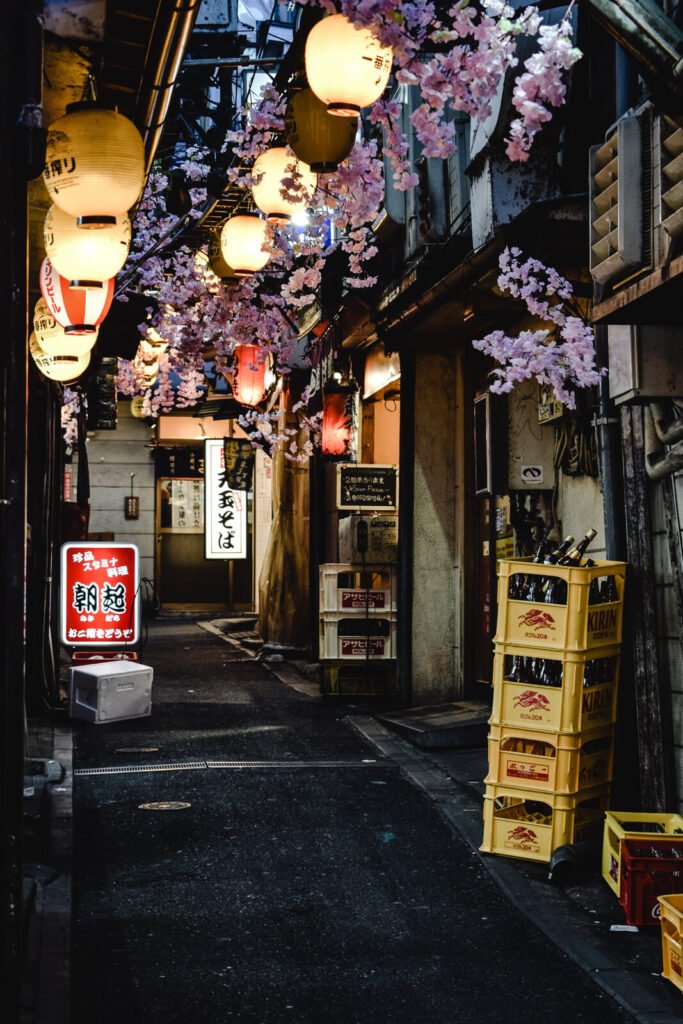
You may also like to read : Tokyo Shibuya Crossing: The World’s Busiest Intersection
Harmonica Yokocho, often referred to simply as “Harmonica Alley,” is a lively, narrow alleyway nestled in the heart of Kichijoji. This atmospheric alley is reminiscent of post-war Tokyo, with its nostalgic charm and retro vibes. The alley is lined with small izakayas, traditional Japanese pubs, where you can savor local dishes and drinks. It’s a fantastic place to experience the intimate side of Japanese nightlife, complete with lantern-lit streets and the aroma of delicious street food.
4.2. Inokashira Park

Inokashira Park is undoubtedly one of the crown jewels of Kichijoji. This expansive park offers a respite from the urban hustle and bustle, making it a favorite spot among locals and tourists alike. The centerpiece of the park is Inokashira Pond, where you can rent rowboats or simply stroll along the water’s edge. The park is also home to a small zoo, a beautiful cherry blossom promenade, and various walking trails. Whether you’re in search of a leisurely picnic spot or a scenic backdrop for photography, Inokashira Park has it all.
4.3. Nakamichi Street
Nakamichi Street is Kichijoji’s shopping district, a bustling thoroughfare where you can indulge in retail therapy and explore the district’s unique street culture. It’s a pedestrian-friendly street lined with shops selling everything from fashion and accessories to artisanal goods and souvenirs. Don’t miss the chance to sample some of the delectable street food offerings along the way, which provide a tantalizing glimpse into Kichijoji’s culinary diversity.
4.4. Ghibli Museum

For fans of animation and creativity, the Ghibli Museum is a pilgrimage site. This enchanting museum is dedicated to the works of Studio Ghibli, the legendary animation studio behind classics like “My Neighbor Totoro” and “Spirited Away.” Inside, you’ll find a world of imagination and artistry, with interactive exhibits, a rooftop garden, and an in-house theater that showcases exclusive Ghibli short films. Due to its popularity, it’s advisable to book tickets well in advance to secure your spot in this magical realm.
4.5. Kichijoji Zoo
Ideal for a family outing, the Kichijoji Zoo offers an opportunity to get up close and personal with a variety of animals from around the world. The zoo is relatively compact, making it manageable for families with children. It’s a wonderful place to educate youngsters about wildlife conservation while enjoying the company of adorable creatures. The zoo also hosts seasonal events and educational programs.
4.6. Temples and Shrines

Kichijoji is not just about modern attractions; it also boasts a rich spiritual heritage. There are several temples and shrines throughout the district, each with its own unique history and architecture. Pay a visit to Jindaiji Temple, which dates back to the 8th century, or the tranquil Gokoku-ji Temple for a peaceful retreat from the urban hustle. These sacred sites offer a glimpse into Japan’s traditional religious practices and provide a serene environment for reflection.
You may also like to read : Navigating Tokyo Transportation efficiently
4.7. Shopping in Kichijoji
Kichijoji is a shopaholic’s paradise, with an array of shopping options that cater to various tastes and preferences. From fashion boutiques featuring the latest trends to vintage shops brimming with unique finds, Kichijoji has it all. Explore the streets to discover hidden gems and stylish boutiques, and be sure to visit the department stores for a dose of upscale retail therapy.
4.8. Hidden Gems
Kichijoji has a knack for hiding treasures in unexpected places. As you wander through its streets, keep an eye out for quaint and quirky shops, tucked-away cafes, and local artisans showcasing their craftsmanship. It’s often the unplanned discoveries that make a visit to Kichijoji truly memorable.
5. Culinary Adventures in Kichijoji
5.1. Ramen Delights
No visit to Kichijoji is complete without savoring a bowl of Kichijoji Ramen. This local specialty is renowned for its savory soy-based broth, which is simmered to perfection. The noodles are typically firm and chewy, creating a delightful textural contrast. Whether you prefer traditional toppings like chashu (braised pork) or something more avant-garde, Kichijoji’s ramen joints offer a variety of options to satisfy your taste buds.
5.2. Izakayas and Yakitori Bars
Kichijoji comes alive at night with its vibrant izakaya and yakitori bar scene. These establishments offer an authentic Japanese dining experience, where you can enjoy a wide range of small dishes and skewered grilled meats. The lively atmosphere and shared dining style make izakayas and yakitori bars perfect for socializing with friends or mingling with locals.
5.3. Local Sweets and Desserts
Indulge your sweet tooth in Kichijoji by sampling some of the district’s delectable sweets and desserts. From fluffy Japanese pancakes to traditional wagashi (Japanese sweets), you’ll find an array of confections to satisfy your cravings. Don’t forget to try Kichijoji’s signature sweets, which often incorporate seasonal ingredients and flavors.
5.4. Kichijoji’s Coffee Culture
For coffee aficionados, Kichijoji is a haven of specialty coffee shops and cafes. Many of these establishments take their craft seriously, sourcing high-quality beans and brewing methods that highlight the flavors of the coffee. Whether you prefer a cozy, traditional cafe or a minimalist, modern space, Kichijoji’s coffee culture offers something for every coffee lover.
6. Kichijoji for Families: Kid-Friendly Attractions
6.1. Kichijoji with Children

Kichijoji is not only a destination for adults; it’s also incredibly family-friendly. The district offers a range of activities that cater to the interests of children, making it an ideal spot for a family day out. Whether you have toddlers or teenagers, Kichijoji has something to keep everyone entertained.
You may also like to read : 20 Best Budget Hotels Tokyo: Affordable Stays in the Heart of Japan’s Capital
6.2. Inokashira Park Zoo
A highlight for families with kids, the Inokashira Park Zoo is an accessible and charming place to introduce children to a variety of animals. The zoo is home to species from around the world, including capuchin monkeys, red pandas, and capybaras. It’s an educational experience where children can learn about wildlife conservation and observe animals in a naturalistic environment.
6.3. Playgrounds and Recreation

Kichijoji’s commitment to family-friendly spaces is evident in its numerous playgrounds and recreational areas. These well-maintained spaces provide a safe environment for children to run, play, and make new friends. The lush greenery of Inokashira Park is an excellent backdrop for a family picnic, and its spacious lawns are perfect for a game of catch or frisbee.
7. The Kichijoji Shopping Experience
7.1. Nakamichi Street Shopping
Nakamichi Street isn’t just about trendy boutiques; it’s a shopping experience in and of itself. The street’s vibrant atmosphere, adorned with colorful banners and bustling crowds, makes every shopping excursion an adventure. The shops along Nakamichi Street offer a mix of fashion, accessories, and lifestyle products. Whether you’re hunting for the latest fashion trends or searching for unique, handmade crafts, you’re likely to find it here.
7.2. Department Stores
Kichijoji boasts several department stores that cater to a range of shopping preferences. These multi-story retail hubs are home to both local and international brands. For those seeking luxury and high-end items, the department stores in Kichijoji are the place to explore. They also offer a wide selection of cosmetics, home goods, and gourmet food products, making them ideal for souvenir shopping.
7.3. Unique Souvenirs
While exploring Kichijoji’s various shopping districts, be on the lookout for unique souvenirs that capture the essence of the district. Many shops sell locally crafted items and products that reflect Kichijoji’s cultural diversity. From handmade ceramics to traditional textiles, these souvenirs make for meaningful mementos of your visit.
8. Kichijoji’s Art and Culture Scene
8.1. Art Galleries
Kichijoji nurtures a thriving art scene, with numerous galleries showcasing a wide range of artistic expressions. You can explore contemporary art, traditional Japanese paintings, and even experimental installations. The galleries often rotate their exhibitions, ensuring that each visit offers a fresh perspective on the world of art.
8.2. Live Performances

The cultural vibrancy of Kichijoji extends to its live performances. The district hosts a variety of theatrical productions, including traditional Japanese theater, contemporary plays, and musical performances. Whether you’re a theater enthusiast or simply curious about Japanese performing arts, Kichijoji’s venues provide an excellent opportunity to immerse yourself in the world of entertainment.
9. Kichijoji: A Residential Haven
9.1. Housing and Accommodation
Kichijoji’s unique blend of urban convenience and natural beauty has made it an attractive place to call home for many Tokyoites. The district offers a diverse range of housing options, from modern apartments and condominiums to traditional Japanese-style homes. It’s not uncommon to find properties with stunning views of Inokashira Park or tucked away in quiet, tree-lined streets.
9.2. Quality of Life
Living in Kichijoji comes with a high quality of life. Residents enjoy easy access to green spaces, cultural amenities, and a wide array of dining options. The district’s strong sense of community is evident in its local festivals, events, and neighborhood associations. With its excellent transportation links, Kichijoji residents can easily commute to central Tokyo while still enjoying the tranquility of their residential haven.
10. Festivals and Events in Kichijoji
10.1. Cherry Blossom Festival
Springtime in Kichijoji is a magical experience. As the cherry blossoms bloom in Inokashira Park and along the Nakamichi Street promenade, the district comes alive with the Cherry Blossom Festival. Locals and tourists alike gather to enjoy hanami (flower viewing) parties under the cherry blossoms, complete with picnics and celebrations. It’s a time when Kichijoji’s parks and streets become a canvas of pink and white blooms.
10.2. Matsuri
Traditional Japanese festivals, known as matsuri, are an integral part of Kichijoji’s cultural calendar. These festivals celebrate various aspects of Japanese heritage, from honoring ancestors to paying homage to local deities. During matsuri, the streets of Kichijoji are adorned with colorful floats, parades, and traditional performances. It’s an excellent opportunity to immerse yourself in Japan’s rich cultural traditions and witness the community spirit that defines Kichijoji.
11. Kichijoji by Night: Nightlife and Entertainment
11.1. Bars and Pubs
When the sun sets, Kichijoji’s nightlife scene comes alive. The district offers a range of bars and pubs, catering to different tastes and preferences. You can find everything from cozy, traditional izakayas to modern cocktail lounges. It’s a great place to unwind, socialize, and enjoy Japanese spirits like sake and shochu.
11.2. Live Music
Kichijoji’s cultural diversity extends to its music scene. The district hosts a variety of live music performances, featuring genres ranging from jazz and rock to traditional Japanese music. Many venues offer intimate settings where you can enjoy local and international artists up close. If you’re a music enthusiast, Kichijoji won’t disappoint.
11.3. Late-Night Eateries
For those seeking a late-night culinary adventure, Kichijoji has a selection of eateries that stay open into the early hours. These establishments serve delicious dishes that cater to night owls, ensuring that you can satisfy your cravings no matter how late it gets. From savory ramen bowls to delectable yakitori skewers, Kichijoji’s late-night dining options are a treat for the taste buds.
12. Seasons in Kichijoji: When to Visit
12.1. Spring

Spring is undoubtedly one of the most enchanting seasons to visit Kichijoji. The cherry blossoms in full bloom create a dreamlike atmosphere in Inokashira Park and throughout the district. The Cherry Blossom Festival adds to the festive spirit, making it a prime time for hanami picnics and outdoor activities.
12.2. Summer
Summer in Kichijoji brings a host of outdoor events and festivals. The warm weather invites visitors to explore the district’s parks and gardens, and it’s an excellent time to enjoy the open-air dining and street food stalls.
12.3. Autumn
Autumn paints Kichijoji in vivid hues of red and gold as the foliage in Inokashira Park transforms. The cool, crisp air is perfect for leisurely walks, and the season is often associated with artistic events and exhibitions.
12.4. Winter
Winter in Kichijoji carries a unique charm. While the weather may be cooler, the holiday season brings festive decorations and illumination. It’s a cozy time to explore the district’s indoor attractions, warm up with hot beverages, and experience the festive atmosphere.
13. Kichijoji’s Role in Pop Culture
13.1. Studio Ghibli and Hayao Miyazaki
Kichijoji has a profound connection to Studio Ghibli, the world-renowned animation studio founded by Hayao Miyazaki. Studio Ghibli’s influence on the district is palpable, with the Ghibli Museum serving as a testament to their creative legacy. This whimsical museum not only showcases the studio’s iconic characters and films but also provides visitors with a behind-the-scenes look at the animation process. The Ghibli Museum’s architecture alone, designed by Miyazaki himself, reflects the enchanting and fantastical worlds depicted in the studio’s films.
13.2. Literary References
Beyond its association with animation, Kichijoji has also found its way into literature. Several novels and stories are set in or inspired by the district’s unique ambiance. Writers have often drawn upon Kichijoji’s vibrant streets, tranquil parks, and eclectic mix of cultures to create captivating narratives. Exploring these literary references can provide a deeper appreciation of Kichijoji’s role in storytelling and creativity.
14. Kichijoji: A Blend of Tradition and Innovation
14.1. Historic Sites
Kichijoji’s commitment to preserving its heritage is evident in the district’s historic sites. Temples, shrines, and centuries-old structures coexist harmoniously with modern developments. Visitors can embark on a journey through time, exploring these sites while immersing themselves in the spiritual and cultural aspects of Japan’s past.
14.2. Modern Developments
While honoring its history, Kichijoji also embraces innovation and modernity. The district’s streets are lined with contemporary architecture, cutting-edge boutiques, and cafes that cater to the evolving tastes of its residents and visitors. This juxtaposition of old and new creates a dynamic atmosphere that’s uniquely Kichijoji.
15. Kichijoji’s Accessibility for Tourists
15.1. Language and Communication
Navigating Kichijoji as a tourist is made easier by the availability of English signage and the proficiency of many residents in English. While Japanese remains the primary language, you’ll find that many establishments, particularly those catering to tourists, have English-speaking staff and bilingual menus. Learning a few basic Japanese phrases can go a long way toward enhancing your experience and connecting with locals.
15.2. Tourist-Friendly Services
Kichijoji is well-equipped with services catering to tourists’ needs. You’ll find tourist information centers, currency exchange kiosks, and baggage storage facilities at key locations, including Kichijoji Station. These services ensure that your visit to Kichijoji is as convenient and enjoyable as possible.
16. Tips for a Memorable Visit
16.1. Local Etiquette
Respecting local customs and etiquette is essential while visiting Kichijoji, as it is in the rest of Japan. Bowing is a common greeting, and it’s customary to remove your shoes when entering someone’s home or certain traditional restaurants. While Kichijoji is generally a welcoming and tolerant district, it’s essential to be mindful of cultural differences.
16.2. Packing Essentials
Depending on the season of your visit, packing essentials may vary. In spring, comfortable walking shoes and light layers for changing temperatures are advisable. In summer, lightweight clothing, sunscreen, and insect repellent can be essential. Autumn may require layers, as temperatures can be cool, and winter calls for warm clothing and appropriate footwear, especially if you plan to explore the parks.
16.3. Safety and Health
Kichijoji is known for its safety, but it’s always wise to exercise common-sense precautions, such as safeguarding your belongings and following local safety guidelines. Japan’s healthcare system is highly regarded, and medical services are readily available. It’s a good idea to carry a basic first-aid kit and any necessary medications, along with travel insurance for added peace of mind.
17. Kichijoji’s Future: What Lies Ahead?
17.1. Urban Development
As we contemplate the future of Kichijoji, urban development plays a crucial role. The district’s unique charm, with its blend of tradition and modernity, needs careful preservation. Any development should maintain the delicate balance between Kichijoji’s historical character and its aspirations for growth. Urban planning must consider sustainable practices, green initiatives, and the preservation of the district’s cultural heritage.
17.2. Community Initiatives
Kichijoji’s vibrant sense of community is one of its defining features. The future should see continued efforts to strengthen this community bond. Initiatives that encourage local businesses, promote cultural exchange, and engage residents in neighborhood projects will be pivotal. The participation of the community in shaping the district’s future ensures that Kichijoji remains a place where people feel a deep connection.
18. Kichijoji: A Place to Call Home
18.1. Personal Stories
The heart of Kichijoji is not just in its physical attractions but also in the stories of its residents. Personal narratives, experiences, and memories create the tapestry of life in Kichijoji. As the district evolves, it’s essential to preserve and celebrate these stories, as they form the soul of Kichijoji. Residents’ perspectives provide invaluable insights into what makes Kichijoji a cherished home.
18.2. The Kichijoji Spirit
The Kichijoji spirit is an intangible essence that binds the district together. It’s a sense of belonging, a shared appreciation for culture and nature, and a commitment to fostering a welcoming environment. The future of Kichijoji should embody and nourish this spirit, ensuring that it continues to thrive and inspire generations to come.
19. Conclusion: Embracing Kichijoji’s Unique Charm
19.1. A Destination Like No Other
Kichijoji is not just a place on a map; it’s an experience, an exploration, and a journey. Its unique charm lies in its ability to captivate the hearts of those who visit, making them fall in love with its beauty, culture, and community. As you conclude your visit to Kichijoji, remember that its allure is not something that can be easily described; it must be experienced firsthand.
20. Final Thoughts: Kichijoji’s Timeless Appeal
20.1. A Timeless Treasure
In conclusion, Kichijoji is a district that transcends the boundaries of time and trends. Its timeless appeal lies in its ability to capture the hearts of all who cross its path. Whether you’re a traveler seeking adventure, a local in search of serenity, or an artist looking for inspiration, Kichijoji offers something profound and unique.
You may also like to read : Yanaka: Old-World Charm and Quaint Streets
20.2. A Journey Worth Taking
As you embark on your own journey to Kichijoji, we hope this comprehensive guide has illuminated the myriad facets of this hidden gem. From its cultural diversity and natural beauty to its culinary delights and rich history, Kichijoji is a destination that invites exploration and discovery.
Kichijoji encourages you to wander its streets, engage with its residents, savor its flavors, and immerse yourself in its culture. It is a place where the past and present coexist harmoniously, creating a tapestry of experiences that linger in the heart and memory.
In the end, Kichijoji is not just a location; it is an encounter with the extraordinary. It is a reminder that within the vast urban landscape of Tokyo, there are pockets of wonder and authenticity waiting to be found. It is an invitation to be captivated, to be inspired, and to be moved by the unique charm of Tokyo’s hidden gem.
So, go forth and explore Kichijoji. Walk its streets, breathe its air, and let its essence seep into your soul. In Kichijoji, you may just discover a piece of Tokyo that feels like home, a place where the heart finds solace, and a destination that leaves an indelible mark on your journey.
Thank you for accompanying us on this exploration of Kichijoji, and may your own adventure in this enchanting district be filled with wonder and delight.
Access
FAQ
What to do in Kichijoji?
Here are a couple of things you can try at Kichijoji.
1. Enjoy boat rides and walks at Inokashira Park.
2. Explore the wonderful world of the Ghibli Museum.
3. Discover small eateries and bars at Harmonica Yokocho.
4. Shop at some unique shops on Sunroad Shopping Street.
5. Enjoy local cuisine.
Is Kichijoji worth visiting?
Kichijoji has a lot to offer. Inokashira Park, Ghibli Museum, Harmonica Yokocho and a lot of cozy cafes are some of it’s attractions.
Why is kichijoji so popular?
Locals consider Kichijoji as one of Tokyo’s best places to live. It has a perfect mix of shopping streets, cafes and quite residential areas.
Is Kichijoji expensive?
The cost of living at Kichijoji is at the higher end of cost spectrum as compared to some other neighborhoods. The moment you come out of station you will be surrounded by a number of costly department stores. Housing prices are relatively expensive.
Is Inokashira Park worth visiting?
Absolutely! Inokashira Park is a serene oasis in bustling Tokyo, perfect for a relaxing stroll or a boat ride on the pond. With its lush greenery, charming cafes, and the nearby Ghibli Museum, it offers a delightful escape into nature and culture.
What should I eat in Kichijoji?
Kichijoji, a culinary gem in Tokyo, offers a delightful array of flavors. Indulge in Japanese wagyu beef skewers at Satou Kichijoji, savor fresh seafood at Tsukada Suisan, and slurp udon noodles at Ibuki Udon. Don’t miss sweet crepes from Crepe House Circus or fluffy pancakes at Wood Berry’s. Bon appétit!
What to do in Kichijoji with kids?
Kichijoji, a charming neighborhood in Tokyo, offers a delightful array of activities for families with kids. Let’s explore some kid-friendly adventures:
Inokashira Park: Stroll around the tranquil Inokashira Pond, rent swan paddle boats, and visit the Benzaiten Buddhist shrine. Kids can even wash coins for financial luck at the dragon-shaped spout.
Inokashira Park Zoo: Interact with animals, pet guinea pigs, and explore this family-friendly zoo.
Ghibli Museum: A must-visit for Studio Ghibli fans. Remember to make reservations in advance.
How far is Kichijoji from the Ghibli Museum?
Kichijoji is around 13 kms away from Shibuya. By train it will take around 34 minutes to reach Kichijoji from Shibuya.
more from airashijapan
Navigating Tokyo Transportation efficiently
Tokyo Shibuya Crossing: The World’s Busiest Intersection
Japanese Temples: Senso-ji and Nakamise Shopping Street
Exploring Tokyo: Unveiling Top Attractions and Hidden Gems
Kichijoji: Unveiling the Charm of Tokyo’s Hidden Gem
20 Best Budget Hotels Tokyo: Affordable Stays in the Heart of Japan’s Capital
Yanaka: Old-World Charm and Quaint Streets
The Mystical Allure of the Torii Gate: A Gateway to Japanese Culture
Meiji Shrine: Journeying Through Tokyos Meiji Shrine
Exploring the Heart of Tokyo: Shinjuku
Tokyo Tower: Panoramic City Views
Omoide Yokocho: Tokyo’s Nostalgic Alley of Memories
Akihabara Electric Town : Tech and Anime Haven
Roppongi Tokyo: Fusion Hub of Culture and Nightlife
Harajuku Japan: A trendsetter’s Heaven
Tokyo Autumn 2024: The Ultimate Guide to Experiencing Fall in Japan’s Capital

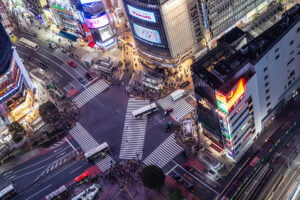

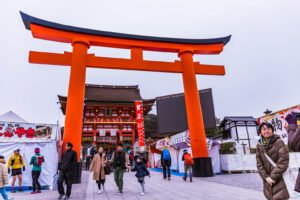
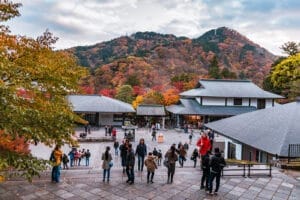
Pingback: Yanaka: Old-World Charm and Quaint Streets - airashijapan.com
Pingback: Exploring Tokyo: Unveiling Top Attractions and Hidden Gems - airashijapan.com
Pingback: Exploring the Heart of Tokyo: Shinjuku - airashijapan.com
Pingback: Omoide Yokocho: Tokyo’s Nostalgic Alley of Memories - airashijapan.com
Pingback: Harajuku Japan: A Trendsetter’s Haven - airashijapan.com
Pingback: Navigating Tokyo Transportation efficiently - airashijapan.com
Pingback: The Mystical Allure of the Torii Gate: A Gateway to Japanese Culture - airashijapan.com
Pingback: Spring in Tokyo: Sakura Dreams at Shinjuku Gyoen - airashijapan.com
Pingback: Harajuku St: Where Tokyo Street Photography Comes Alive - airashijapan.com
Pingback: Best Places to See Autumn Foliage in Tokyo - airashijapan.com
Pingback: Akihabara Electric Town : Tech and Anime Haven - airashijapan.com